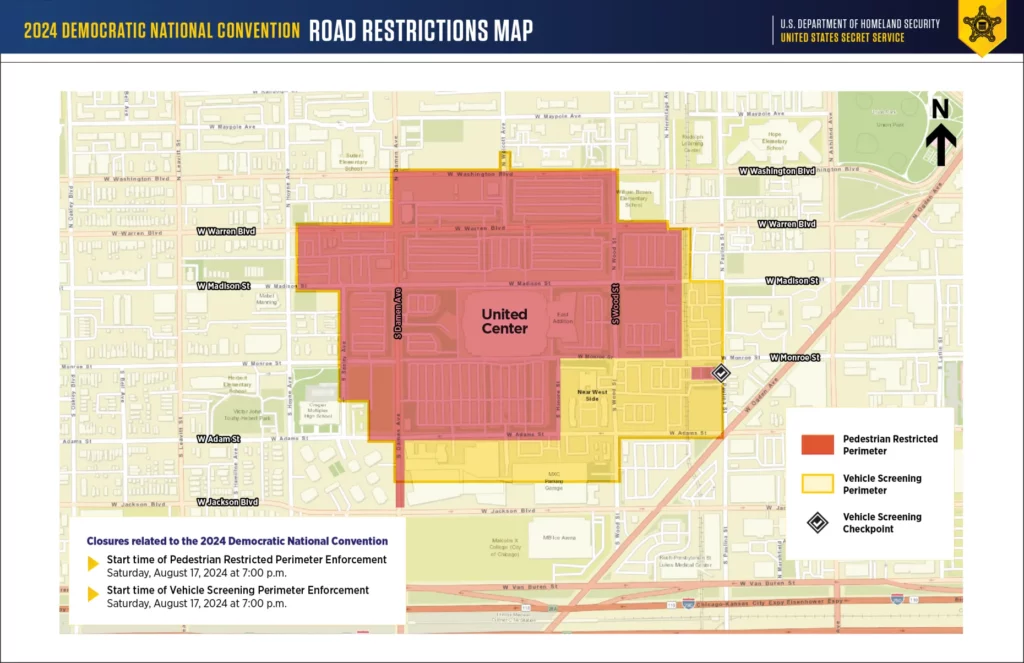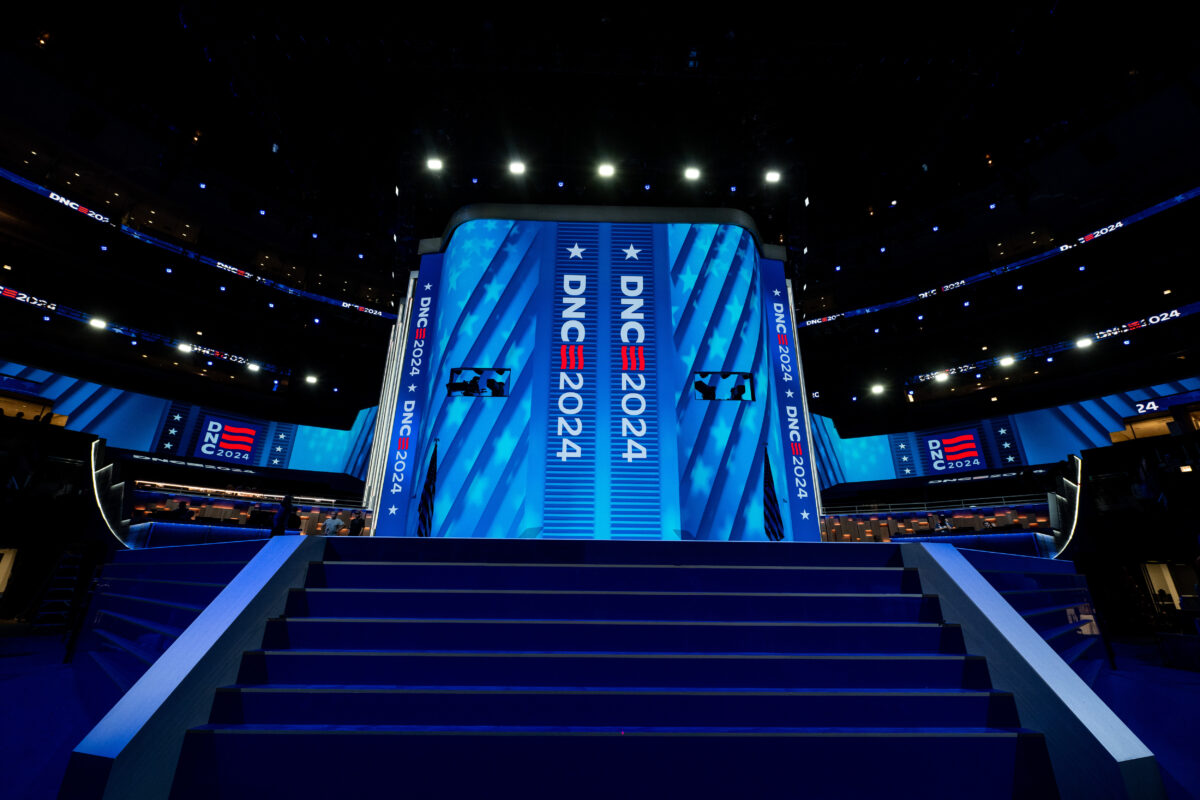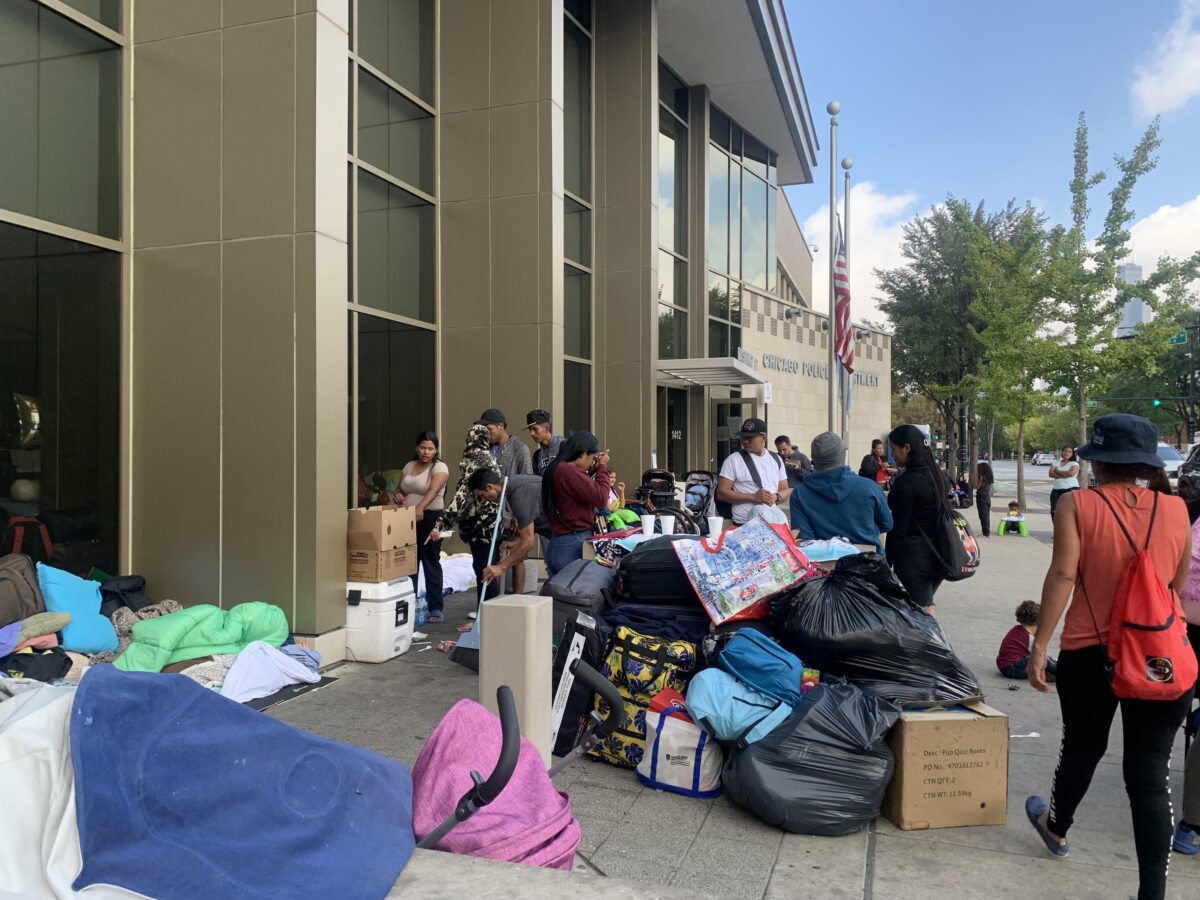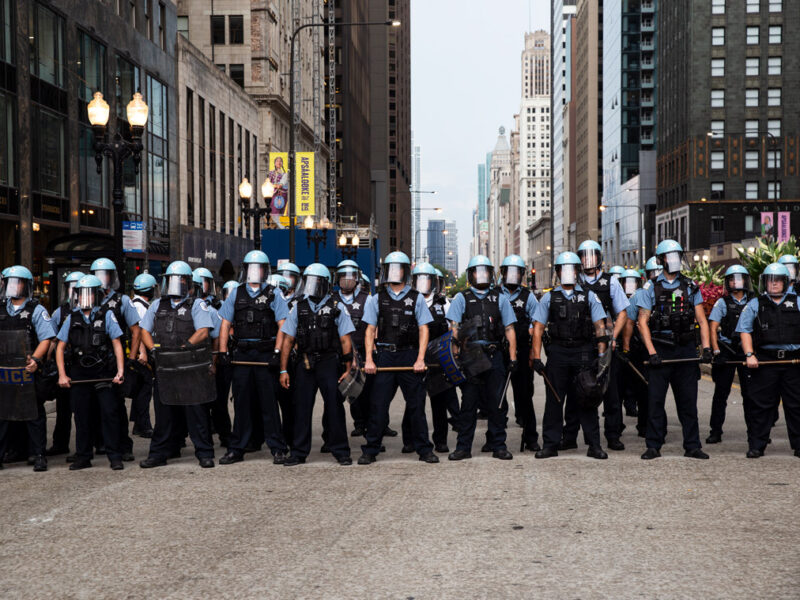With Vice President Kamala Harris’s presumptive nomination quashing the possibility of an open convention, this year’s Democratic National Convention (DNC) is shaping up to be another prime-time, multi-day infomercial for Democrats. How did political conventions get here, and how should Chicagoans get around the DNC?
We have your guide to the ins and outs of political conventions—as well as the security restrictions that could affect your commute this week.
What is a delegate?
A delegate is chosen through a primary or caucus in their state to represent that state’s voters in the selection of the presidential nominee. They can also vote on the party’s platform.
Delegates must be party members and can include activists and elected politicians. Senator Robert Peters, who represents the 13th Senate District in the Illinois General Assembly covering downtown Chicago to the Indiana border, and Rep. Kam Buckner, who represents Illinois’ 26th District, are among the Illinois delegates at this year’s convention.
How does a candidate qualify for the nomination?
The Democratic Party has nearly 4,700 delegates. To clinch the nomination, Vice President Kamala Harris needed to secure the signatures of at least 300 delegates with no more than fifty hailing from one state.
After qualifying for the virtual roll call, Harris won 4,563 delegate votes, or 99 percent. The delegates who were “pledged” to vote for Biden were not required to vote for Harris, but the majority of votes swung that way.
How have conventions changed over the years?
The basics of conventions date back to the 1830s, when state party delegates gathered to enact a platform and select a presidential ticket. That approach still holds true today, according to Sam Rosenfeld, an associate professor of political science at Colgate University. But the outcry over the nomination process at the 1968 DNC in Chicago led to the McGovern Fraser Commission, which opened up delegate selection and established affirmative action plans. Those reforms also sparked the proliferation of direct primary elections across the vast majority of states and left delegates at the conventions with less decision-making power at the convention, Rosenfeld added.
“I don’t call the convention a nominating convention anymore. I call it a ‘confirmation convention.’ Basically they are confirming the work of the primaries,” said R. Craig Sautter, co-author (with former Alderman Ed Burke) of Inside the Wigwam: Chicago Presidential Conventions 1860-1996.
What’s the point of holding a convention today if the primaries already decide the nominee?
“From a legal standpoint and from a campaign finance standpoint and an administrative standpoint, conventions are legally constituted entities and that give a sort of formal imprimatur on the campaigns,” said James McCann, a political science professor at Purdue University. “Because there’s all kinds of spending regulations and fundraising regulations and then things that that kind of change or get triggered, right, once you become the official candidate and not just the presumptive.”
The most important function of a prime-time spot for a party convention today is to get their message out, articulate their brand and rally their base, McCann added. In that sense, conventions have evolved from decision-making events to grand infomercials. Still, those infomercials provide high-profile moments and conventions often boost a party in the polls, notes Heather Hendershot, author of When the News Broke: Chicago 1968 and the Polarizing of America.
“There’s an amazing convention bump—and if the convention goes terribly like ’68, it’s not a good bump,” Hendershot said, adding that Nixon was able to weaponize the chaos on the convention floor and on the streets of Chicago to his advantage.
How to get around the DNC

Which areas will be closed down for security?
United Center and McCormick Place will have two restricted areas, a pedestrian restricted area and a vehicle restricted area. Closures will begin Saturday, August 17, around the United Center at 7 p.m. while closures around McCormick Place will begin this Friday, August 16, at 10 p.m. Those barriers will start being dismantled in the early morning of August 23, the day after the convention ends.
Pedestrians can move about freely within the vehicle screening perimeter (shown in yellow on the map). Those areas won’t have fences but will have a series of street closures. Vehicles will be subject to screening in those areas.
Can bicycles go through the vehicle restricted area?
Yes. Bicycles are allowed in the vehicle restricted area and don’t have to go through a security checkpoint.
Bicycles, scooters and golf carts aren’t allowed in the pedestrian restricted area.
What if I want to get a rideshare from the United Center or McCormick Place?
Be ready for some delays. Uber, Lyft, taxis and any vehicles must go through a security checkpoint.
Can people organize and protest in the area where pedestrians are free to walk?
Yes. First Amendment activity is allowed in that area but protesters won’t be able to enter the pedestrian restricted area (highlighted in red), Duane DeVries, CPD’s Bureau of Counterterrorism chief, told alders during a July 25 public safety hearing.
Who is allowed to enter the pedestrian restricted area?
That area is restricted to credentialed individuals including convention attendees, staff, workers, volunteers, media, and public safety employees. Pedestrians must go through a security checkpoint.
How will the convention affect the CTA?
The CTA isn’t beefing up rail service during the course of the convention, CTA President Dorval Carter told alders at a July 25 public safety hearing.
“On the rail side of the house, there’s not a lot of extra service that we’re doing. We’re running our regular service,” Carter said. “There may be a couple of extra runs that we’ll put in to provide capacity during certain peak hours, particularly at O’Hare, at Midway Airport when the delegates are coming in or leaving. But for the most part, our rail service will operate as normal.”
Which bus routes will the DNC affect?
As of press time, the following bus routes will be impacted:
- #1 (Bronzeville/ Union Station)
- #3 King Drive
- #4 and #X4 (Cottage Grove)
- #20 Madison
- #21 Cermak
- #50 Damen
- #126 Jackson
- #192 University of Chicago Hospital Express
Updates and more information are available at transitchicago.com/dnc.
How can I get alerts about traffic, street closures and emergencies during the convention?
For updates from Chicago’s Office of Emergency Management & Communications, you can text DNC to 226787 or download the Chicago OEMC app.
Leigh Giangreco is a freelance reporter based in Chicago. You can follow her work on Twitter @LeighGiangreco and on her website at leighgiangreco.com.




